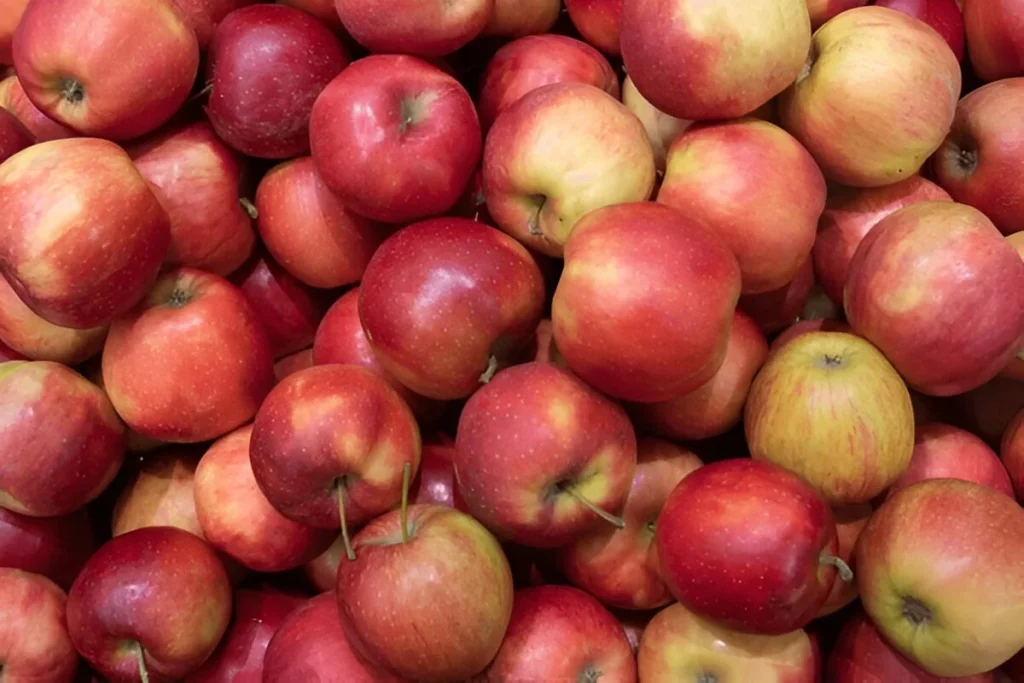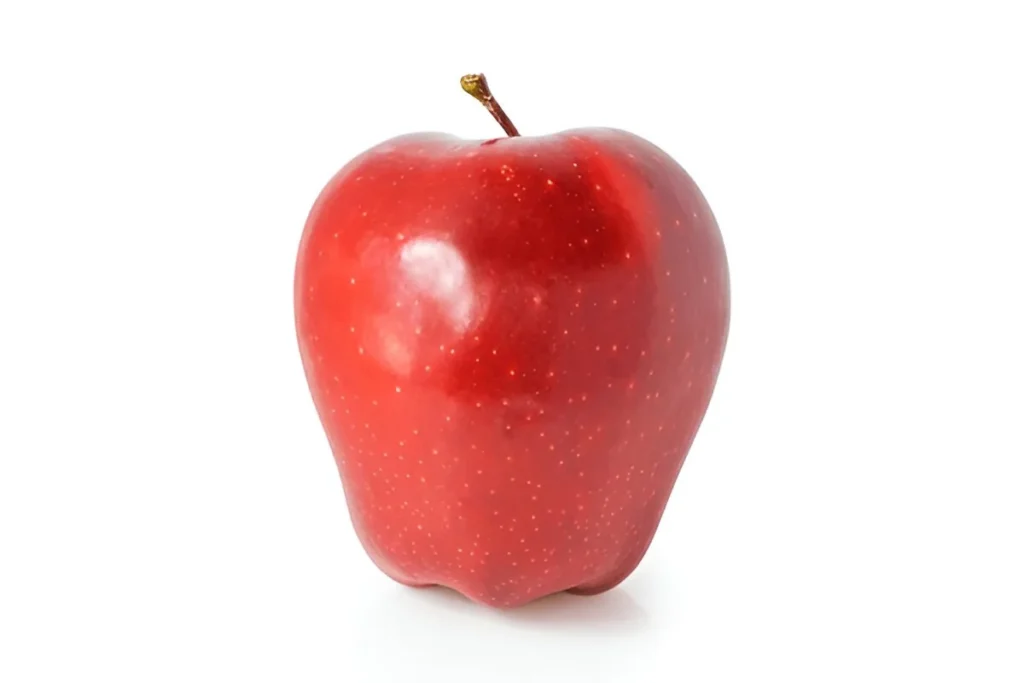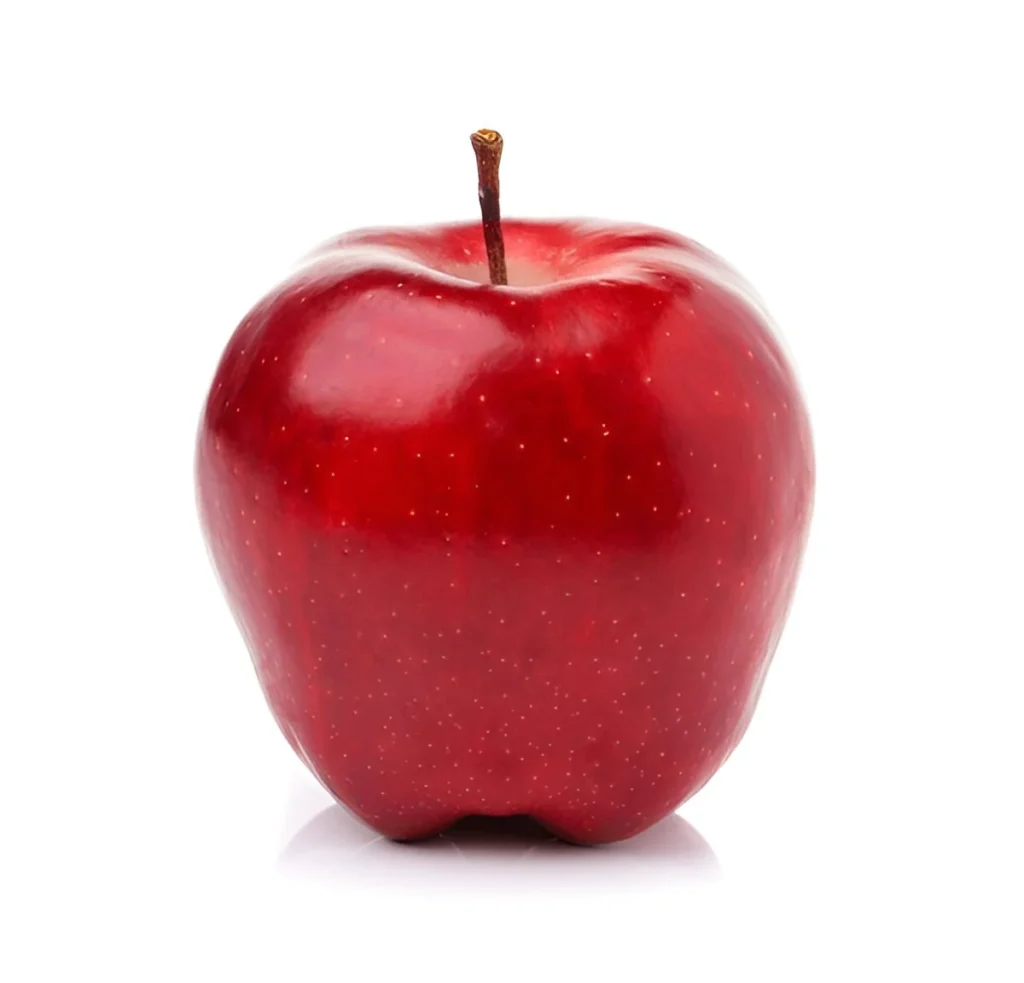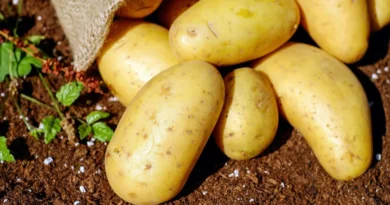Why Honeycrisp Apples Are The Best Choice For Your Health
This guide looks into honeycrisp apple nutrition. It shows how their calories fit into a healthy diet and provide important nutrients. You’ll see why these apples are more than just a sweet snack. They help with digestion, boost your immune system, and give you energy.
Knowing their nutritional value helps you make better choices for your health.
Honeycrisp apple: Key Takeaways
- Honeycrisp apples offer fiber, vitamins, and antioxidants in each serving.
- A medium honeycrisp apple contains about 95 honeycrisp apple calories.
- They provide vitamin C to boost immunity and support skin health.
- Their crunch and natural sugars make them a satisfying low-calorie snack.
- Incorporating honeycrisp apple benefits into your diet supports heart and digestive health.
What Makes Honeycrisp Apples Special
Choosing a Honeycrisp apple is more than picking a fruit. It’s about selecting a result of years of research and special qualities. Let’s explore the story behind their popularity.
The Origin Story of Honeycrisp Apples
In the 1960s, scientists at the University of Minnesota aimed to create an apple with unmatched crunch and flavor. After years of work, the Honeycrisp apple was born in 1991. It’s a mix of Honeygold and Macoun apples, made to grow well in cold climates.
They focused on texture and appearance, which now define them. Their early success came from these traits.
Distinctive Characteristics of Honeycrisp Apples
These apples are special for three main honeycrisp apple characteristics:
- Texture: A uniquely crisp bite that stays fresh even when stored.
- Flavor: A balanced mix of sweet and tart, making them versatile for snacking or baking.
- Appearance: Vibrant red-and-yellow skin that’s as appealing as their taste.
Why Honeycrisp Apples Have Gained Popularity
Despite being pricier, honeycrisp apple benefits like intense flavor and texture make them worth it. Their crunch is great in salads and pies, and their natural sweetness means less added sugar. Chefs and home cooks love them for their reliability in recipes.
Today, they’re a top-selling variety, showing how their traits meet both taste and function needs.
Honeycrisp Apple Nutrition Facts at a Glance

Learn about the honeycrisp apple nutrition facts to understand how it boosts health. A medium apple (182g) has about 96 honeycrisp apple calories. This makes it a great, low-calorie snack.
“Apples are a leading source of dietary fiber in American diets,” notes the USDA, highlighting their role in maintaining heart and digestive health.
A single serving gives you:
- 96 honeycrisp apple calories
- 25g total carbs: 4g fiber, 19g natural sugars
- 8% of daily vitamin C and trace minerals like potassium
This fruit has only 0.5g protein and 0.3g fat. It’s rich in fiber, helping you feel full and control blood sugar. Each bite is packed with vitamins and antioxidants, fighting oxidative stress. This makes honeycrisp apples a wise, low-calorie choice for any meal or snack.
Breaking Down the Calorie Content of Honeycrisp Apples
Knowing the honeycrisp apple calories is key to managing your intake. Let’s look at how size affects calories to find a balance between taste and nutrition.
Calories in Different Serving Sizes
A medium Honeycrisp apple (182g) has 96 calories. Here’s how portions stack up:
| Serving Size | Calories |
| Small (100g) | 57 |
| Medium (182g) | 96 |
| Large (242g) | 125 |
| 1 cup slices | 65 |
How Honeycrisp Calories Compare to Other Apple Varieties
Honeycrisps have a balanced calorie profile compared to other apples:
| Apple Type | Calories (medium size) |
| Honeycrisp | 96 |
| Gala | 72 |
| Red Delicious | 73 |
| Granny Smith | 77 |
Honeycrisps have slightly more calories because they’re juicier. But they’re still a healthy choice.
Calorie Distribution: Carbs, Fiber, and Sugars
Each medium apple gives you:
- 26g honeycrisp apple carbs (mostly natural sugars)
- 4.4g honeycrisp apple fiber content
- 19g natural sugars
The fiber in Honeycrisps helps slow down sugar absorption. This makes them a better snack than processed foods. Try pairing apple slices with nut butter for extra protein and energy.
Essential Vitamins and Minerals in Your Honeycrisp

Your honeycrisp apple nutrition is more than just calories. It’s full of important nutrients. Each bite gives you a mix of honeycrisp apple vitamins and honeycrisp apple minerals that help your body every day. These natural helpers boost your immunity, energy, and health.
- Vitamin C: One apple gives you up to 14% of your daily vitamin C. This antioxidant fights stress and strengthens your immune system.
- B Vitamins: B6 and others help turn food into energy. They also support your brain and make red blood cells.
- Vitamin K: This vitamin is key for bone health. It helps your body absorb calcium and keep bones strong.
Minerals in honeycrisp apples include potassium for heart health, calcium for bones, and manganese for metabolism. Even small amounts of these honeycrisp apple minerals add up when you eat them often.
- Potassium: Keeps electrolytes balanced and supports muscles and nerves.
- Calcium & Phosphorus: Together, they strengthen teeth and bones.
- Manganese: Helps with bone growth and wound healing.
These nutrients work with fiber and antioxidants to make a nutrient-rich package. Choosing honeycrisp apples means you’re fueling your body with vitamins and minerals. Every crunchy bite is more than flavor—it’s a step towards your dietary goals.
Fiber Content and Digestive Health Benefits
A medium Honeycrisp apple packs a nutritional punch with its honeycrisp apple fiber content. This natural fiber supports your digestive system and boosts overall wellness. Let’s explore how this fruit helps your gut and daily nutrition.
How Much Fiber Is in One Honeycrisp Apple?
A medium Honeycrisp apple (about 182g) has 4-5 grams of dietary fiber. It includes both soluble and insoluble fiber, with pectin being a big part of it. Here’s the detailed breakdown:
| Type | Amount |
| Soluble Fiber | ~1.5g |
| Insoluble Fiber | ~2.5-3.5g |
Meeting Your Daily Fiber Needs with Honeycrisp Apples
Adults need 25-38g of fiber daily. One Honeycrisp apple gets you 10-20% closer to that goal. Pair it with these foods to boost your intake:
- Overnight oats (adds 1-2g)
- Almonds (2g per ounce)
- Black beans (7.5g per half-cup)
Together, they make a snack that fuels your day and supports honeycrisp apple digestive benefits.
The Science Behind Apple Fiber and Gut Health
Pectin in Honeycrisp apples acts like a natural cleanser. Studies show it feeds good gut bacteria, promoting regularity and reducing bloating. Insoluble fiber adds bulk to stool, easing constipation. This dual action may also lower cholesterol by binding to fats in the digestive tract.
“Pectin’s prebiotic effects help maintain a balanced microbiome, aiding immune function,” says registered dietitian Dr. Emily Carter.
Eating Honeycrisp apples regularly may even help stabilize blood sugar levels by slowing carbohydrate absorption—a win for long-term health.
Antioxidant Properties and Immune Support
Honeycrisp apples are full of honeycrisp apple antioxidants that protect your cells. These natural compounds fight free radicals, which can weaken your immune system. Eating honeycrisp apples regularly may help keep your body strong.
Key antioxidants in honeycrisp apples include:
- Quercetin: supports heart health and reduces inflammation
- Catechin: helps neutralize harmful molecules
- Chlorogenic acid: boosts antioxidant activity in your bloodstream
- Anthocyanins (in the skin): give apples their red hue and guard against cellular damage
These compounds work together to strengthen your defenses. Studies show honeycrisp apple health advantages include lower inflammation levels linked to chronic conditions like heart disease. The immune-boosting power comes from their ability to support white blood cell function, helping your body fight off infections faster.
Anthocyanins in the skin also protect brain cells, potentially slowing cognitive decline as you age. To maximize benefits, always leave the peel on—this is where most antioxidants concentrate. Adding these apples to your diet can be a simple way to stack your meals with disease-fighting nutrients.
How to Incorporate Honeycrisp Apples into Your Diet
Make Honeycrisp apples a part of your daily meals and snacks. Their crisp texture and sweetness make them great for many recipes. They fit well into any diet.
Healthy Snack Ideas with Honeycrisp Apples
Pair apples with foods rich in nutrients for a quick energy boost:
- Slice with peanut butter and cinnamon for a protein-packed snack
- Create “apple nachos” with yogurt dip and granola toppings
- Core and fill with cottage cheese or hummus for a creamy twist
Cooking and Baking with Honeycrisp Apples
Use their tart-sweet flavor in dishes like:
- Salads: Toss with walnuts, goat cheese, and balsamic vinaigrette
- Main courses: Cube into pork chops or chicken salads for added crunch
- Baked goods: Reduce sugar by 25% in honeycrisp apple recipes like pies or muffins
Honeycrisp Apple Meal Prep Tips
Make your week easier with these tips:
| Meal Type | Idea | Prep Tip |
| Breakfast | Add to oatmeal or smoothies | Pre-chop and freeze slices |
| Lunch | Top salads or wraps | Marinate in lemon juice to prevent browning |
| Dinner | Serve with roasted veggies | Store in airtight containers for 3 days |
For busy days, prep honeycrisp apple meal ideas in advance. Slice apples in single-serve bags for easy snacks or meal additions. Their firm texture works well in both raw and cooked forms.
Best Storage Practices to Preserve Nutritional Value

Proper honeycrisp apple storage ensures you get the most flavor and nutrients from every bite. Follow these steps to maintain honeycrisp apple freshness and nutritional value for weeks:
- Refrigerate in the crisper drawer at 30–32°F (0–1°C). This temperature slows nutrient breakdown, keeping vitamin C and antioxidants intact.
- Use high humidity (90–95%). A damp cloth or open container helps retain moisture, preventing shriveling.
- Avoid storing near bananas or avocados. Ethylene gas from these fruits speeds ripening, causing honeycrisp apple freshness to fade faster.
When kept correctly, Honeycrisp apples stay at peak quality for 2–3 months. Vitamin C levels drop 15–20% after 8 weeks, but proper honeycrisp apple storage slows this decline. For longer-term storage, freeze slices on a tray, then transfer to airtight bags. Freezing locks in nutrients but softens texture, ideal for smoothies or baked goods.
“Optimal storage conditions extend both shelf life and nutrient retention by up to 40%,” says a USDA study on apple preservation.
Always inspect apples before eating. Discard any with soft spots to avoid spoilage spreading. Prioritize eating the ripest apples first to maximize their health benefits. With these steps, your Honeycrisps stay crisp and nutritious longer.
Conclusion: Making Honeycrisp Apples Part of Your Healthy Lifestyle
Honeycrisp apples are packed with benefits that make them great for a healthy diet. They have a crisp texture and are naturally sweet. Plus, they are low in calories and full of nutrients.
These apples are rich in fiber, vitamins, and antioxidants. They help with digestion, boost immunity, and support overall health. Their high fiber and vitamin C content fit well with eating whole foods.
Enjoy honeycrisp apples in many ways, like as a snack or in recipes. They’re perfect for plant-based diets or Mediterranean meals. Choose fresh, ripe apples and store them right to keep their nutrients and taste.
Adding honeycrisp apples to your diet is easy and healthy. They offer a mix of taste and nutrition. By choosing these apples and other whole foods, you start a healthy eating habit.
FAQ
What is the calorie content of a medium Honeycrisp apple?
A medium Honeycrisp apple weighs about 182g and has 80-90 calories. It’s a low-calorie snack that’s full of nutrients.
How do Honeycrisp apples compare nutritionally to other apple varieties?
Honeycrisp apples have a crisp texture and balanced flavor. They have similar calories to Gala and Granny Smith apples. But, they have more fiber and antioxidants, making them a healthier choice.
What are the main vitamins and minerals found in Honeycrisp apples?
Honeycrisp apples are packed with Vitamin C, B vitamins, and Vitamin K. They also have potassium, calcium, and phosphorus. These nutrients support the immune system and bone health.
How can I increase my fiber intake with Honeycrisp apples?
A medium Honeycrisp apple has 4-5 grams of fiber. To get enough fiber, add Honeycrisp apples to salads, smoothies, or enjoy them with nut butter.
What are the antioxidant benefits of consuming Honeycrisp apples?
Honeycrisp apples are full of antioxidants like quercetin and catechin. These antioxidants fight free radicals. Eating them regularly can help lower the risk of heart disease and some cancers.
What are some creative ways to incorporate Honeycrisp apples into my diet?
You can enjoy Honeycrisp apples in many ways. Try them with cheese, in salads, or in baked goods like pies and crisps. They’re also great in breakfast smoothies or as a topping for oatmeal.
How should I store Honeycrisp apples for optimal freshness?
To keep Honeycrisp apples fresh, store them in the crisper drawer. Keep the temperature between 30-32°F (0-1°C) and humidity high. Avoid storing them with ethylene-sensitive fruits to prevent early ripening.
Are there any health risks associated with consuming Honeycrisp apples?
Honeycrisp apples are generally safe to eat. But, people with food allergies should talk to their doctor first. Always wash apples well to remove pesticides and bacteria.









